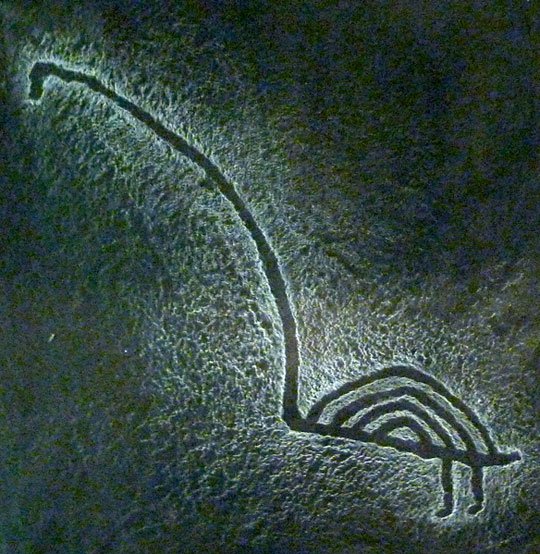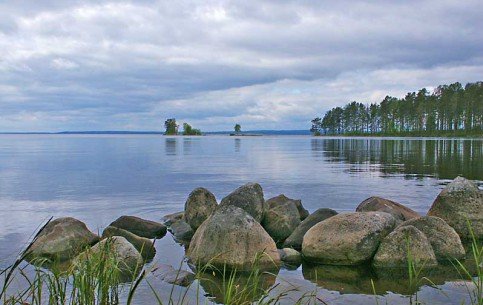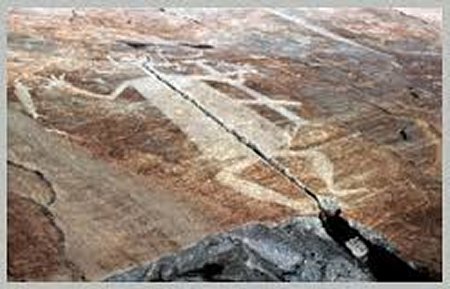Prehistoric ‘Cinema’ – Unique Karelian Rock Carvings With Special Light Effects
Ellen Lloyd - AncientPages.com - At first glance the Karelian rock carvings do not appear to be different from other carvings around the world. However, these petroglyphs are considered some of the most complex and expressive examples of rock art in northern Europe.
What is extraordinary about them is that they display special light effects. Watching some of the Karelian rock carvings is like viewing a movie in a prehistoric cinema.
A swan, from the Karelian Lake Onega region of Russia. Image credit: David Rothenberg.
The rock carvings show scenes our ancestors wanted to preserve for future generations. It's quite remarkable how much time and effort the ancients must have put into these stunning ancient creations.
On the eastern bank of, the second largest lake in Europe archaeologists discovered about 1,200 rock drawings that are estimated to be from 5 to 6 thousand years. Lake Onega is found in the Republic of Karelia, Russia.
Although the Karelian rock carvings have been known for more than a hundred years, it took a long time before scientists made an effort to interpret and analyze the individual motives.
“With knives only made of rough stone, the artists cut figures of men, animals, birds, fish, reptiles, lunar and solar symbols, all on hard granite.
These men must have had a clear idea of what they wanted to show, also acute vision and steady hands, since a wrong cut in the silica could have ruined the picture for good. Granite is a canvas that will not allow corrections.
The choice of site is also interesting since they picked on rocks rising vertically from the lake waters, “said Konstantin Lauskin, a Russian archaeologist.
Lake Onega
Why would our ancestors bother to carve images on difficult accessible hard rocks when it was much easier to construct the rock drawings in other places?
Was it because the ancients wished to create a prehistoric cinema for future generations? A study of the site indicates that the ancient artists were very familiar with various light effects.
“The designs on the cliffs become clearer in the sun’s rays at sunset, and it is clear that the artists chose them precisely because of the light-effects, not because of wishing to run risks,” explained Lauskin who had the luck to see some of the prehistoric drawings during the summer solstice.
“Before the sun went down the designs were confused, so that they could hardly be distinguished from below. But when the sun neared the horizon the granite shone dark-red and the variously colored lines of patterns were very clear.
This is a magnificent spectacle that can be scientifically explained.
Karelian carving depicting a giant figure.
“Granite has a granular structure which is easily polished. The Onega granite has been polished for thousands of years by the water while the lines of the carvings on the smooth surfaces of the rocks maintain the above-mentioned granular structure.
ding areas. Thus the incisions become alive, though the such luminous effects are not the only ones they have,” said Lauskin.
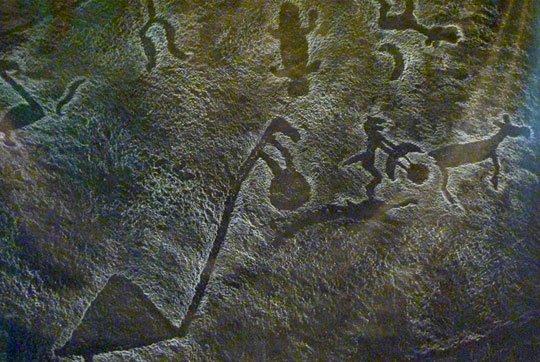 Finn-Ugrick rock art from the Karelian Lake Onega region of Russia.Image credit: David Rothenberg.
Finn-Ugrick rock art from the Karelian Lake Onega region of Russia.Image credit: David Rothenberg.
When you look at the rock drawings they appear primitive and insignificant, but they will surprise you. The carved images become alive almost before the sun rays touch the rocks! The depiction of the frog seems to turn into an elk. The hunter makes a movement with the hand and the campfire flickers. The entire spectacle on the granite lasts for a quarter of an hour until the setting sun makes the designs grow weaker.
The images on the rocks are also moving, but there is a scientific explanation for this phenomenon.
“Think of some luminous signs: if the light goes on and off regularly the signs will seem to be moving. The same effects can be seen here – groups of tiny prisms on the unequal surfaces of the designs act like lamps so that in certain moments some will become more luminous than others. The intensity of the light reflected will thus be different, as certain parts will shine more than others.
Both light sources are moving and whilst the sun is setting the angle of incidence of its rays is constantly changing likewise; whereas the water plays the part of a reflector. The incidence of the rays makes the various groups of prisms shine which gives the onlooker the impression that the whole design is moving,” Lauskin explained.
The creation behind the Onega petroglyphs is the work of a group of intelligent people. Watching the carvings when the sun rays touch the rocks, is like watching a movie that has reached us from the late Stone Age. History is alive in Karelia and the ancient movie is still playing…
Written by - Ellen Lloyd – AncientPages.com
Copyright © AncientPages.com All rights reserved. This material may not be published, broadcast, rewritten or redistributed in whole or part without the express written permission of AncientPages.com
More From Ancient Pages
-
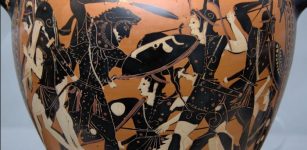 Did The Amazons Really Exist? – Truth Behind Myths Of Fierce Female Warriors
Featured Stories | Oct 29, 2014
Did The Amazons Really Exist? – Truth Behind Myths Of Fierce Female Warriors
Featured Stories | Oct 29, 2014 -
 Yule Goat Is A Scandinavian Christmas Tradition Based On Norse Legends And Worship Of God Thor
Ancient Traditions And Customs | Dec 5, 2017
Yule Goat Is A Scandinavian Christmas Tradition Based On Norse Legends And Worship Of God Thor
Ancient Traditions And Customs | Dec 5, 2017 -
 Mystery Of King Solomon’s Temple
Biblical Mysteries | Dec 3, 2018
Mystery Of King Solomon’s Temple
Biblical Mysteries | Dec 3, 2018 -
 Could Aztec Innovative ‘Chinampas’ – ‘Floating Islands’ Help Modern Farmers?
Archaeology | Nov 4, 2019
Could Aztec Innovative ‘Chinampas’ – ‘Floating Islands’ Help Modern Farmers?
Archaeology | Nov 4, 2019 -
 Ancient Hand Grenades: Explosive Weapons In Medieval Jerusalem During Crusades
Archaeology | Apr 26, 2022
Ancient Hand Grenades: Explosive Weapons In Medieval Jerusalem During Crusades
Archaeology | Apr 26, 2022 -
 Moon: What Was Its Role In Beliefs Of Ancient People?
Featured Stories | Apr 6, 2019
Moon: What Was Its Role In Beliefs Of Ancient People?
Featured Stories | Apr 6, 2019 -
 3,000-year-old knight discovered at the Palidli necropolis
Civilizations | Aug 22, 2015
3,000-year-old knight discovered at the Palidli necropolis
Civilizations | Aug 22, 2015 -
 Why Were Actors Painted As Cats By Ukiyo-e Artists In Japan?
Ancient History Facts | Feb 11, 2020
Why Were Actors Painted As Cats By Ukiyo-e Artists In Japan?
Ancient History Facts | Feb 11, 2020 -
 World’s Oldest Bread Found In Neolithic Oven In Çatalhöyük, Turkey
Archaeology | Mar 12, 2024
World’s Oldest Bread Found In Neolithic Oven In Çatalhöyük, Turkey
Archaeology | Mar 12, 2024 -
 Scottish Settler’s Ominous Encounter With A Mysterious Being In West Virginia
Featured Stories | Mar 18, 2024
Scottish Settler’s Ominous Encounter With A Mysterious Being In West Virginia
Featured Stories | Mar 18, 2024 -
 Millennia Old Extremely Complex Object Of Unknown Origin
Ancient Technology | Jul 8, 2020
Millennia Old Extremely Complex Object Of Unknown Origin
Ancient Technology | Jul 8, 2020 -
 Ancient Trade Routes Between Iran And Mesopotamia – Uncovered
Archaeology | Dec 4, 2015
Ancient Trade Routes Between Iran And Mesopotamia – Uncovered
Archaeology | Dec 4, 2015 -
 Unpredictable Rainfall May Have Caused Disintegration Of Early Maya Societies
Archaeology | Apr 7, 2023
Unpredictable Rainfall May Have Caused Disintegration Of Early Maya Societies
Archaeology | Apr 7, 2023 -
 Mystery Of The Cave Where People Vanish Or Become Disoriented
Featured Stories | Jan 2, 2024
Mystery Of The Cave Where People Vanish Or Become Disoriented
Featured Stories | Jan 2, 2024 -
 Unique And Unusually Large 8000-Year-Old Building Discovered At Çatalhöyük Site, Turkey
Archaeology | Sep 26, 2022
Unique And Unusually Large 8000-Year-Old Building Discovered At Çatalhöyük Site, Turkey
Archaeology | Sep 26, 2022 -
 England’s Oldest Bible Reveals Surprising Hidden Secrets
Biblical Mysteries | Mar 19, 2016
England’s Oldest Bible Reveals Surprising Hidden Secrets
Biblical Mysteries | Mar 19, 2016 -
 Ancient Human Feeding Behavior Studied By Scientists
Archaeology | Jan 18, 2022
Ancient Human Feeding Behavior Studied By Scientists
Archaeology | Jan 18, 2022 -
 Rare Gold Coins And Treasures Linked To Crusaders’ Conquest Of Caesarea – Discovered
Archaeology | Dec 4, 2018
Rare Gold Coins And Treasures Linked To Crusaders’ Conquest Of Caesarea – Discovered
Archaeology | Dec 4, 2018 -
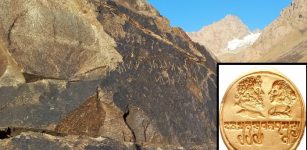 Enigmatic Ancient ‘Unknown Kushan Script’ Deciphered By Scientists
Archaeology | Jul 13, 2023
Enigmatic Ancient ‘Unknown Kushan Script’ Deciphered By Scientists
Archaeology | Jul 13, 2023 -
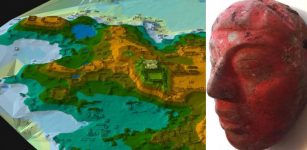 Ancient Tomb Of Maya Ruler Te’ Chan Ahk Discovered In Guatemala
News | Sep 14, 2017
Ancient Tomb Of Maya Ruler Te’ Chan Ahk Discovered In Guatemala
News | Sep 14, 2017

